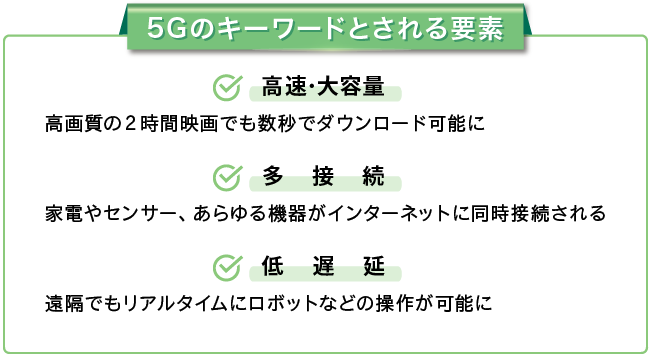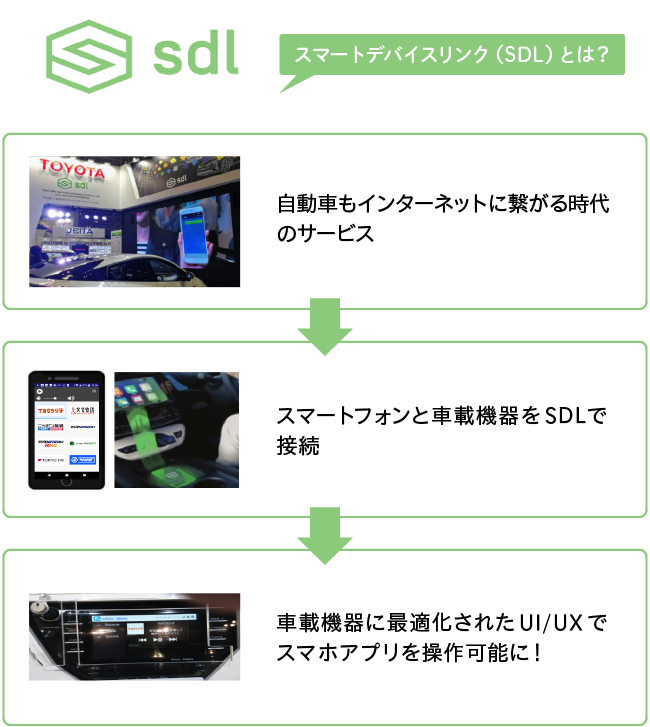Note: This website was automatically translated, so some terms or nuances may not be completely accurate.
What is the Voice Business in the 5G Network Era?
"Innovation begins with audio media and content."
This is a quote from Takafumi Horie on a certain radio program.
Also, concepts like 5G, AI, and IoT are constantly mentioned in discussions about the near future these days.
Having been involved with radio media for several years now, I want to consider what the evolution of these technologies means for the radio industry and audio media/content.
<Table of Contents>
▼From 1G to 4G: How Audio Content Has Evolved with Each Generation
▼What Environmental Changes Will 5G Networks Bring?
▼What Innovations Will Radiko Bring in the 5G and IoT Era?
From 1G to 4G: How Audio Content Has Evolved with Each Generation
Before considering 5G (short for 5th Generation, the 5th generation mobile communication system), let's look back at what the 1G to 4G era was like, primarily from the perspective of "voice content."

■1G (1980s–)……The Analog Communication Era
The technology that enabled "voice calls outside the home" from the 1980s to the 1990s is referred to as 1G for convenience. This was still the analog technology stage.
■2G (Around 1993–)……The Era of Email and Ringtones
The subsequent 2G era, emerging in the 1990s, shifted to digital systems, enabling "data communication." Moving beyond merely "carrying a phone," people began using (then) groundbreaking services like "email" and "i-mode."
While it may be fading into distant memory for most people now, one popular service of the 2G era was "ringtones." For 2G networks, even a few bars of audio were too large in data size. Therefore, the system worked by "sending lightweight sheet music data (not audio data) to feature phones, which then played the music using their built-in sound sources."
■3G (Around 2001~)……The Era of Downloadable Ringtones
In the 2000s, the 3G era brought internationally standardized mobile communication systems, enabling data roaming and high-capacity data transmission at several Mbps.
The star entertainment content for 3G phones was audio content like "ringtones" and "full-length ringtones." The service allowing easy song downloads to mobile devices was widely embraced. The radio IP simulcast platform "radiko" (hereafter, Radiko) also saw its birth in this 3G era.
However, the once wildly popular "ringtone downloads" would decline following the dramatic game-changing arrival of the smartphone, the iPhone 3G.
Incidentally, the market size for paid music distribution in Japan actually peaked during this 3G era. While subscription-based services are gradually growing now, the market size is still only about half of what it was back then.
■4G (Around 2010–Present)……The Smartphone Era
As the revolutionary smartphone device became widespread and new rules set by platform giants like Apple and Google began dominating the market, 4G started to proliferate around 2012. Enabling larger data transfers, subscription-based streaming music services replaced ringtone downloads.
This marked the dawn of the "mobile network for smartphones" era we all enjoy today, where everyone started staring at their smartphone screens everywhere they went.
What environmental changes will 5G networks bring?
Commercial 5G services are expected to begin pre-service as early as September this year, 2019. It's right around the corner.
While widespread adoption will still take time, it seems likely that innovations will emerge that differ in significance from those seen up to 4G.
Some view the upcoming 5G network, set to be practical within a decade of 4G's arrival (often called "network technology for smartphones"), as "technology for the post-smartphone era."

First, video content is expected to proliferate as an extension of 4G. High-definition, long-form videos will reportedly download in mere seconds.
However, an even greater change lies in the ability of all kinds of devices and applications to connect to high-speed networks. This is primarily supported by the technological elements of "massive connectivity" and "low latency."
Products and services referred to as the Internet of Things (IoT) fall under this category.
Examples of IoT that many people have already seen, heard about, and experienced at the current 4G stage include smart speakers and voice assistant functions.
You can enjoy music, get information through sound, or give instructions by voice without having to deliberately touch your smartphone to activate it. You can do this while driving a car or doing housework. There's no need to operate things through the keyboard on a small smartphone screen.
In the 5G society, IoT chips will be embedded in all kinds of things, like cars and home appliances, connecting them to the internet. Robots and AI will also frequently appear in this environment, making it possible to obtain information and perform operations via voice commands.
Now, we're beginning to understand that such a "state" is likely approaching. At that time, won't the role of the "radio industry," a leading provider of voice media and content, become even more significant?
The radio industry isn't scrambling to prepare for this new era now. I believe it has already been making the necessary groundwork over the past decade or so.
At the heart of this effort is the well-known radiko.
■The Radio Industry's Groundwork for the 5G Era
- Creating and nurturing radiko, the unified platform for the radio industry
- Realizing the new-era advertising service "radiko Audio Ad"
- Radiko is now compatible with Amazon, Google, and LINE home speakers. It ranks #1 in Alexa Skill rankings.
These strategic moves have been introduced in this series by radiko's Atsushi Sakatani, Dentsu Inc. CDC's Toshiya Araki, and Dentsu Data & Technology Center's Daiki Nagata.
■Don't you think Radiko is just a regular radio app?
https://dentsu-ho.com/articles/6368
■radiko Transforms into a "Marketing Device" Through Data
https://dentsu-ho.com/articles/6533
And this year, Radiko is also undertaking the following initiatives:
・Support for the next-generation in-vehicle mobility middleware standard "SDL"
As cars become IoT-enabled, enabling access to all kinds of services and content experiences, audio content like Radiko is particularly well-suited for the car environment. 
SDL (Smart Device Link) is an industry-standard specification developed by domestic automakers like Toyota and in-vehicle equipment manufacturers. It enables mobile devices like smartphones to "link" with in-vehicle equipment, allowing comfortable operation of various apps even while driving.
By linking smartphones and in-vehicle displays via SDL, Radiko's UI/UX automatically optimizes for the in-vehicle display, allowing users to listen to their favorite programs via voice commands.
Collaboration with IPG Inc. on Program Information Management and Distribution Systems
IPG Inc. is a company that develops and operates a program information management system called "minds." Minds manages program information using a common ID and can also attach additional information, including details about the talent appearing on the program.
This collaboration involves introducing the system to Radiko to comprehensively deliver program information to listeners, facilitate better content discovery, and pursue business development through the visualization of content value.
・"Listener Finder" Visualizes Listener Activity in Real Time

"Listener Finder" is a data dashboard that visualizes Radiko listeners' listening trends in real time, such as changes in listener numbers and cumulative program listening minutes, and can be displayed in studios and other locations.
Post-analysis allows even more detailed examination, enabling minute-by-minute analysis and verification of trends in listener churn and acquisition, as well as regional listener data. It serves as a tool for radio stations aiming for data-driven content creation and business utilization. TBS Radio has already adopted it and commenced actual operations.

Radiko's various initiatives are designed to create touchpoints between audio content and consumers in the 5G era, where "all devices and all applications connect with each other." It can also be said that Radiko has laid the groundwork for acquiring and organizing foundational data to ensure appropriate output.
What innovations will Radiko bring in the era of 5G and IoT?
What changes might we see in advertising during the 5G era?
As digital advertising has become widespread, the advertising industry has increasingly embraced the concept of "shifting from slots to people." This means delivering ads to each individual based on data. Examples like targeted advertising and one-to-one marketing embody this idea.
Technologically, being able to select "people" to deliver ads to was indeed a major advancement. However, when delivering targeted ads, it's not just about "who to deliver them to," but also
- What kind of content are they engaging with?
- What situation or mood are they in? (i.e., what moment?)
When you consider these factors, it becomes clear that we need to take the advertising mindset a step further beyond "from slots to people" and move toward
- from slots to "person × content"
- or even from "slot" to "person × content × moment"
is also a valid approach.
Audio media offers high flexibility in capturing "moments." Whether consumers are cooking, jogging, driving, or looking at their smartphone screen, audio uniquely occupies their auditory sense to deliver messages.

And no matter how much data we gather to understand "people" or "moments," the power of content remains paramount. In producing audio content that reaches diverse people during diverse moments, the radio industry possesses hard-won expertise accumulated over many years—know-how that isn't easily replicated.
Moving forward, formats will likely become more flexible, extending beyond the traditional 24-hour programming day, and the destinations and contexts for content delivery will diversify. However, the radio industry will continue to produce compelling content that captivates listeners, adapting to these evolving environments.
Radiko's business vision includes this passage:
We will liberate people from the small screens of smartphones and restore their imagination through communication by sound.
Isn't this precisely the mindset required in the 5G era, where everything connects to the internet?
From the 1G era to the present, as technological and societal transformations have accelerated, audio content has consistently driven innovation at these turning points. Radiko celebrated its 10th anniversary in 2020, having already fulfilled a significant role. Yet, as we've seen, it also demonstrates the potential for new innovations geared toward the 5G era.
What will be happening another 10 years from now? What role will Radiko play? While no one can predict the future with certainty, as long as those involved with radio maintain purposeful imagination, new innovations will continue to emerge.
■Summary■
・What will happen in the 5G era?
→Everything will be connected via the internet, freeing people from their smartphone screens.
・What innovations will emerge in the 5G era through audio media and content?
→The opportunity for innovation lies in the intersection of "people" and "moments" – a space only audio can truly inhabit.
Was this article helpful?
Newsletter registration is here
We select and publish important news every day
For inquiries about this article
Back Numbers
Author

Wataru Igarashi
Dentsu Inc.
Radio,TV Business Produce Division
After working in the Marketing and Promotion Division and the Sales Division, he joined the Media Services / Radio,TV Division in 2009. He is currently primarily engaged in business related to the next generation of radio and television, including promoting the Radiko service.


